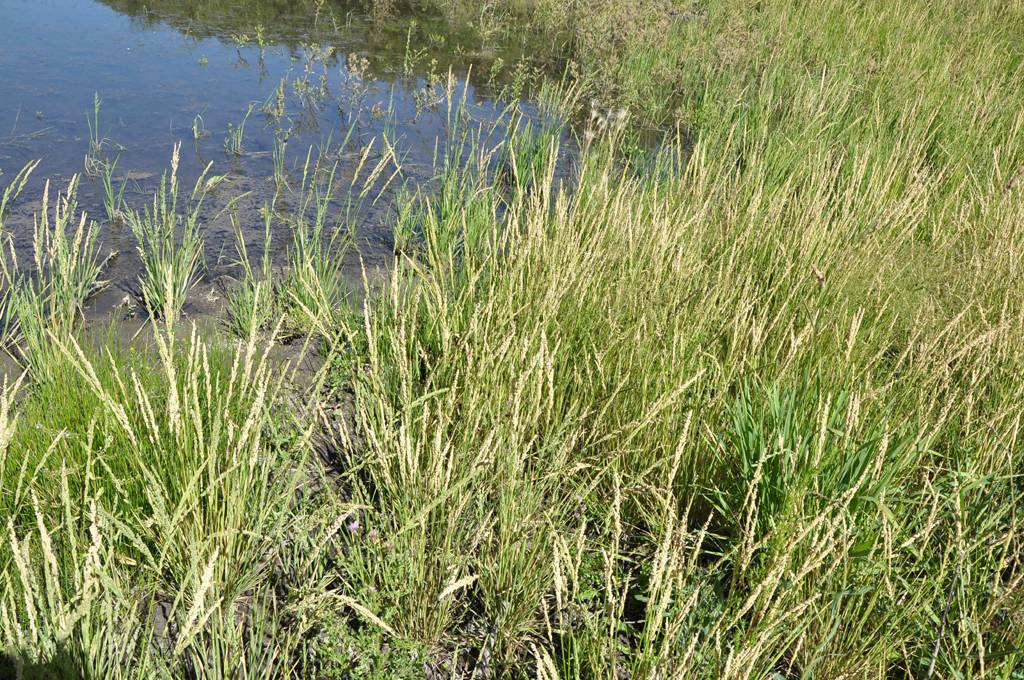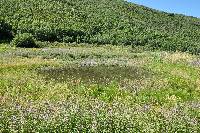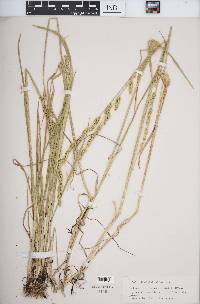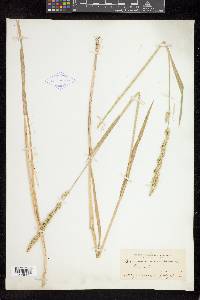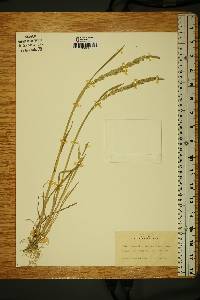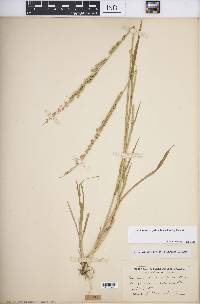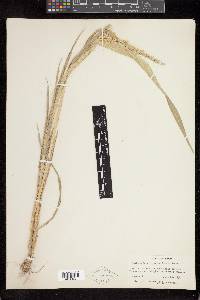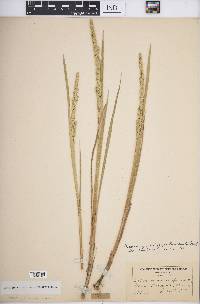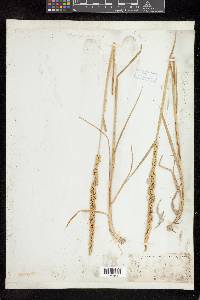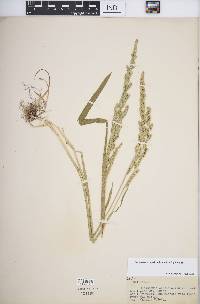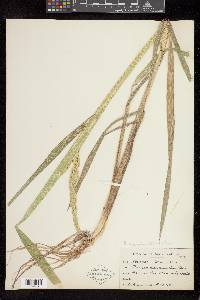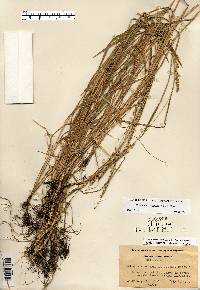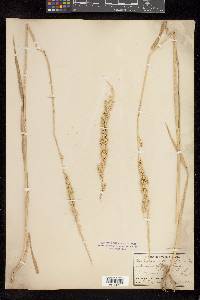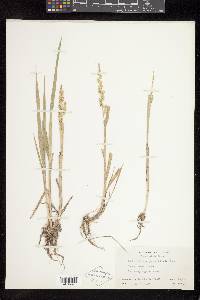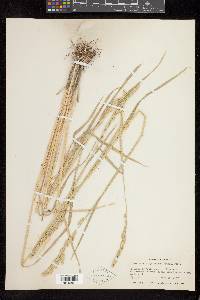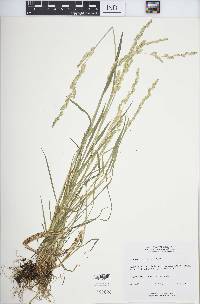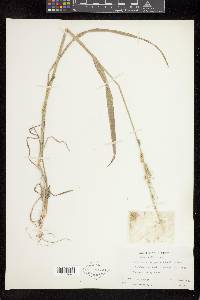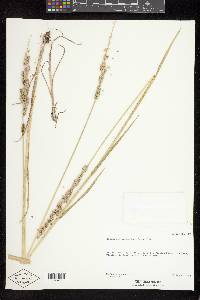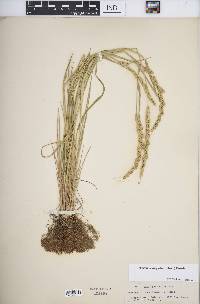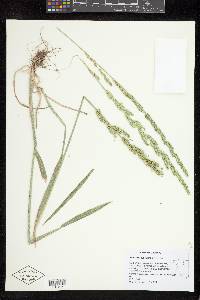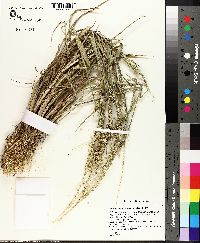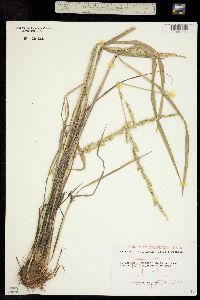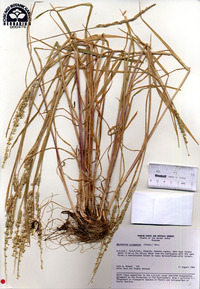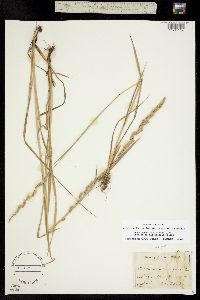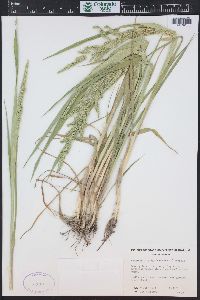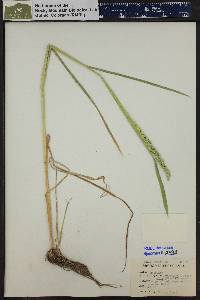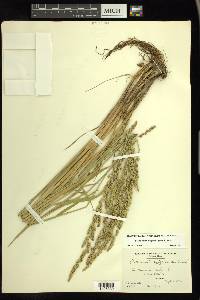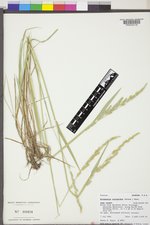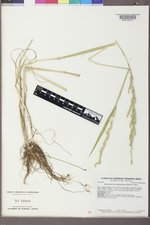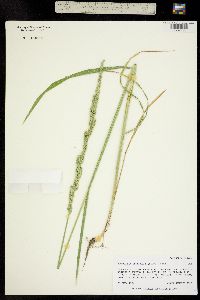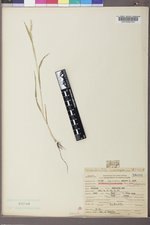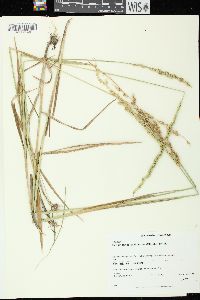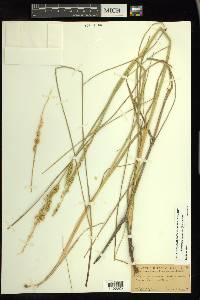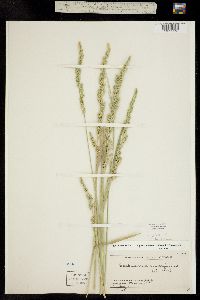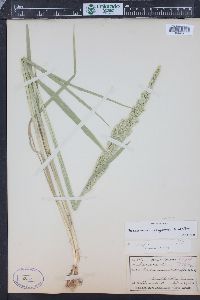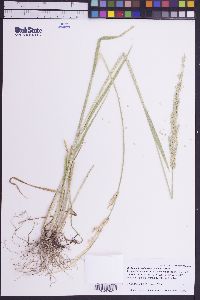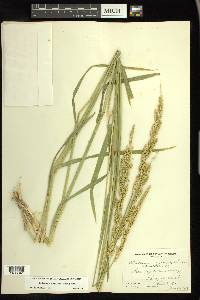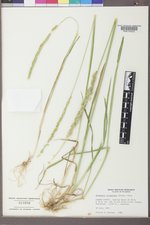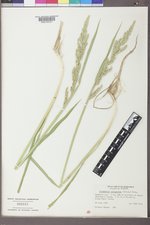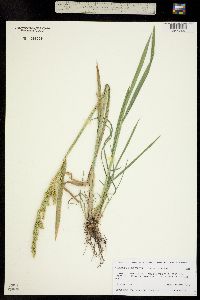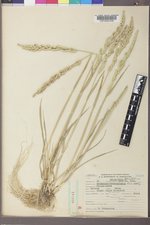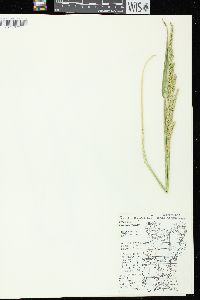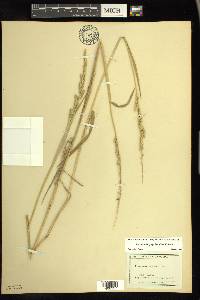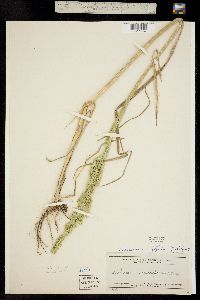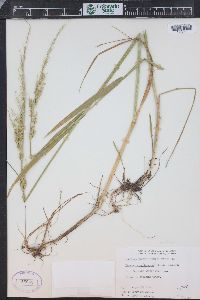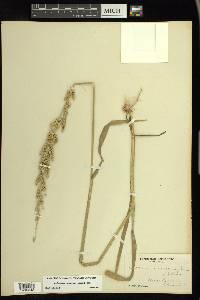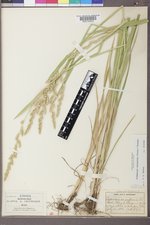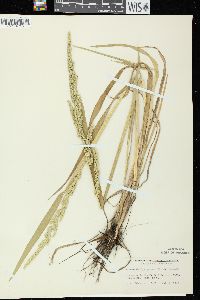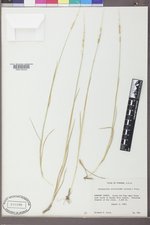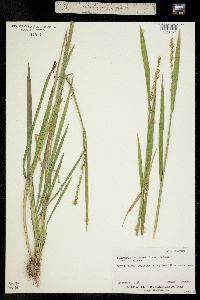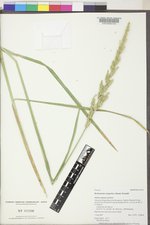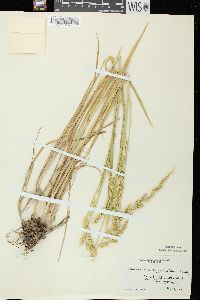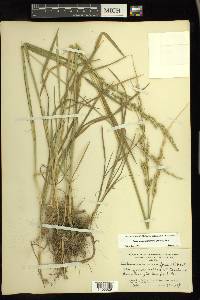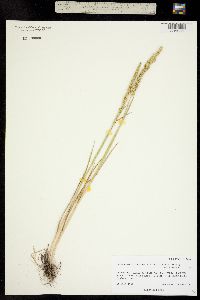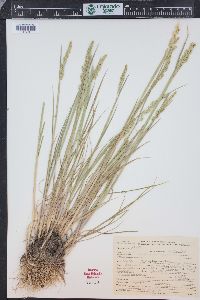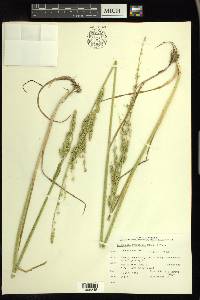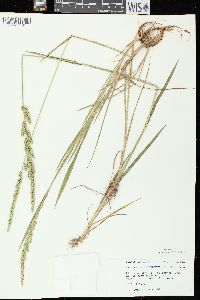Beckmannia syzigachne
|
|
|
|
Family: Poaceae
American Slough Grass, more...American sloughgrass, slough grass, Beckmannie à Écailles Unies
[Beckmannia eruciformis auct. non (L.) Host, moreBeckmannia eruciformis subsp. baicalensis (Kusnez.) Hultén, Beckmannia eruciformis subsp. syzigachne (Steud.) Breitung, Beckmannia eruciformis var. eruciformis (L.) Host, Beckmannia eruciformis var. uniflora Scribn. ex A. Gray, Beckmannia syzigachne subsp. baicalensis (Kusnez.) Koyama & Kawano, Beckmannia syzigachne subsp. syzigachne , Beckmannia syzigachne var. hirsutiflora Roshev., Beckmannia syzigachne var. uniflora (Scribn. ex A. Gray) Boivin] |
Plants annual; tufted. Culms 20-120 cm. Ligules 5-11 mm, pubescent, entire or lacerate, usually folded back; blades 4-10(20) mm wide, flat, scab-rous. Panicles 7-30 cm; branches spikelike, usually 1-2 cm. Spikelets 2-3 mm, round to ovate in side view, with 1 floret, a second undeveloped or well-developed floret occasionally present. Glumes appearing inflated, strongly keeled, 3-veined, apiculate; lemmas 2.4-3.5 mm, unawned, sometimes mucronate; paleas subequal to the lemmas, acute; anthers 0.5-1(1.5) mm, pale yellow. Caryopses shorter than 2 mm, light to medium brown. 2n = 14. Beckmannia syzigachne grows in damp habitats such as marshes, floodplains, the edges of ponds, lakes, streams, and ditches, and in standing water. It is a good forage grass, but frequently grows in easily damaged habitats. General: Grass Family (Poaceae). American sloughgrass is a cool season annual or short lived perennial grass that is commonly found in shallow marshes or sloughs. Its shallow root system supports a leafy stem, which may be as tall as one meter. Basal leaves contain cross veins that intersect the longitudinal veins at right angles to form rectangles. American sloughgrass is classified by most flora’s as an annual species. However, Wynia and Boe, (1984) stated that Beckmannia syzigachne had over wintered in several plots and nurseries at Brookings, South Dakota and was at least a short lived perennial depending on use. The branched inflorescence is classified as a closed panicle (Looman, 1983). The spikelets have very short pedicels and are arranged on only one side of the panicle branches (Reeder, 1953). Spikelets disarticulate below the glumes, and are one or two flowered (Wynia and Boe, 1983). Beckmannia syzigachne possesses the C-3 photosynthetic pathway for carbon dioxide fixation (Waller and Lewis, 1979).
Distribution: For current distribution, please consult the Plant Profile page for this species on the PLANTS Web site. American sloughgrass is the North American native of a two species genus that is widespread in the cooler parts of Eurasia and North America. Beckmannia syzigachne is present in marshes and ditches throughout the northwest and north central states and is occasional in the northeast (Gould and Shaw, 1983).
Habitat: In their examination of prairie, meadow and marsh vegetation in Nelson County, North Dakota, Dix and Smeins (1967) studied the drainage regimes of 100 stands selected to represent the vegetative diversity within the county. The drainage regime gradient went from excessively drained to permanent, or near-permanent gravitational water available throughout most summers. Beckmannia syzigachne was noted to occur in the three wettest regimes in combination with other species. Thus Beckmannia syzigachne is known to occur in the presence of gravitational water, either permanently or for extended periods, during the growing season.
FNA 2007, Field Guide to Forest & Mtn. Plants of N AZ 2009, Ann. Checklist GCNP 1987 Common Name: American sloughgrass Duration: Annual Nativity: Native Lifeform: Graminoid General: Erect, either solitary loosely tufted, tp 150 cm tall, with overlapping spikelets in 2 rows on just one side of panicle branches. Vegetative: Blades 3-10 cm long, 4-10 mm wide, flat, scabrous; stems 20-120 cm long; ligules 5-11 mm long, pubescent, usually folded back, sheaths open. Inflorescence: Panicles spikelike 7-30 cm long, narrow, with erect branches 1-2 cm long; closely overlapping spikelets, laterally compressed, spikelets 2-3 mm long, with usually 1 floret; glumes subequal, appearing inflated, 3-veined, strongly keeled; lemmas 2-3 mm long, unawned, tapering to a point, 3 anthers, caryopses shorter than lemmas. Ecology: Found in damp areas such as marshes, ditches, floodplains, in water and along edges of water at 1200-2700 m (4000-9000 ft). Flowers July-August. Distribution: Found in all nortwestern and north central states and in some states in the northeast. Ethnobotany: Seeds can be ground into flour and used as a cereal. Has also been used for bedding and pillows. Is a good forage grass, but frequently grows in easily damaged habitats due to its affinity for water. Etymology: Bechmannia is hamed for Johan Beckmann, a professor of botany in Germany, and syzigachne comes from Greek syzygos for joined. Editor: LKearsley, 2012 Annual 5-10 dm; lvs scaberulous, the larger 5-10 mm wide; ligule 5-8.5 mm; panicle 10-30 cm, erect, slender, with numerous overlapping branches 1-5 cm; spikes to 2 cm, contiguous, those of a single branch resembling a 4-rowed spike; spikelets 2.5-3.5 mm long and wide; glumes cross-wrinkled, somewhat inflated toward the elevated midvein; lemma acuminate, its point barely protruding from the glumes; a second, sterile floret sometimes present; lodicules linear, nearly 1 mm; 2n=14. Marshes and wet soil; Alas. to Calif. and N.M., e. to Ill.; O.; w. N.Y., where probably intr.; n. Asia. Gleason, Henry A. & Cronquist, Arthur J. 1991. Manual of vascular plants of northeastern United States and adjacent Canada. lxxv + 910 pp. ©The New York Botanical Garden. All rights reserved. Used by permission. |

